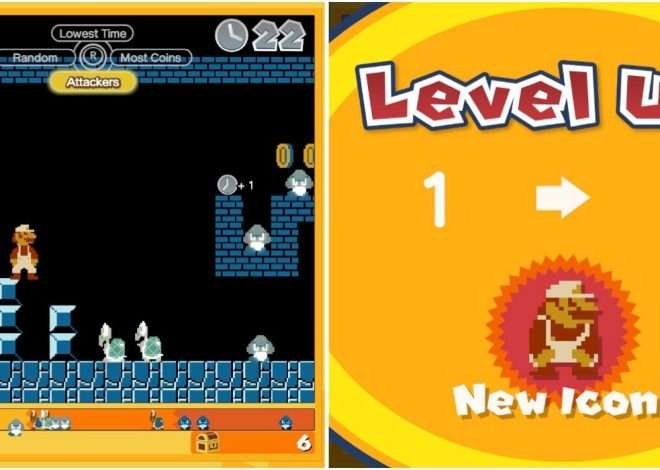Breath of the Wild’s Phenomenal Success
The Legend of Zelda: Breath of the Wild, released in 2017, achieved something truly remarkable. It didn’t just meet expectations; it shattered them. The game became an instant critical darling, lauded for its groundbreaking open-world design and unparalleled freedom. Its commercial success was equally astounding, securing its place as the best-selling game in the entire Zelda franchise. But what exactly propelled Breath of the Wild to such dizzying heights? Let’s delve into the factors that contributed to its phenomenal success.
A Revolution in Open-World Design
Breath of the Wild dramatically redefined what an open-world game could be. Previous Zelda titles offered expansive landscapes, but they often felt segmented, with distinct areas clearly separated by invisible walls or loading screens. Breath of the Wild, in contrast, presented a truly seamless world. Players could traverse the vast Hyrule almost without interruption, scaling towering mountains, exploring dense forests, and delving into treacherous caves—all in a single, breathtakingly rendered space. This seamlessness fostered a sense of exploration and discovery unlike anything seen before in the series.
This open-world design wasn’t just about visual spectacle; it was intricately tied to the gameplay mechanics. The physics engine, for example, allowed for creative problem-solving. Players could use the environment to their advantage, employing physics-based puzzles and using objects strategically to overcome obstacles. A simple rock could become a weapon, a tool, or even a makeshift bridge, encouraging experimentation and rewarding ingenuity.
Innovative Gameplay Mechanics
Beyond the open world, Breath of the Wild introduced several innovative gameplay mechanics that significantly enhanced the player experience. The stamina wheel, for example, added a layer of strategic depth to exploration and combat. Players had to carefully manage their stamina to climb, swim, and even run, adding a sense of realism and challenge to the game. The cooking system, while seemingly simple, allowed for creative experimentation with ingredients found throughout Hyrule, creating potent elixirs and hearty meals that provided various buffs and bonuses. This added a survival element to the game, encouraging players to forage and experiment.
The weapon degradation system, while initially controversial, forced players to adapt and become resourceful. Instead of relying on a single powerful weapon throughout the game, players were encouraged to experiment with different weapons found throughout the world, adapting their combat strategy accordingly. This system encouraged exploration and discovery, as players sought out new and better weapons to replace their broken ones. The sheer variety of weapons, from simple sticks and stones to powerful ancient swords, added to the game’s replayability.
A Captivating Narrative and Engaging Characters
While the gameplay was undeniably groundbreaking, Breath of the Wild also boasted a captivating narrative. The story, while not overly linear, was compelling and mysterious, encouraging players to uncover its secrets at their own pace. The game’s amnesiac protagonist, Link, added a layer of intrigue, allowing players to explore the world alongside him and gradually piece together the history of Hyrule and the events that led to the game’s cataclysmic opening.
The supporting characters were equally well-developed, each with their own unique personalities and backstories. From the quirky shopkeepers to the enigmatic Sheikah, the inhabitants of Hyrule felt real and believable, adding depth and richness to the world. The interactions with these characters, often fleeting and seemingly insignificant, added to the overall immersive experience. Even simple conversations could reveal crucial pieces of information or provide amusing anecdotes.
The Power of Exploration and Discovery
Breath of the Wild’s success is deeply intertwined with its emphasis on exploration and discovery. The vast and varied Hyrule offered countless opportunities for players to uncover hidden shrines, discover ancient ruins, and encounter unexpected challenges. This sense of wonder and surprise kept players engaged and motivated to explore every nook and cranny of the game world. The rewards for exploration were substantial, ranging from powerful weapons and equipment to valuable resources and hidden lore.
The game’s sense of mystery also played a significant role. Players were constantly encouraged to question, investigate, and unravel the secrets hidden within Hyrule’s rich history. The subtle clues and cryptic hints scattered throughout the game world added another layer of complexity and intrigue, challenging players to put the pieces together and uncover the truth.
The Enduring Legacy of Breath of the Wild
The impact of Breath of the Wild extends far beyond its initial release. Its innovative gameplay mechanics and open-world design have influenced countless other games, setting a new standard for the genre. The game’s lasting popularity is a testament to its exceptional quality and enduring appeal. It continues to be praised by critics and players alike, cementing its status as a landmark achievement in video game history.
Moreover, Breath of the Wild’s success has had a significant impact on the Zelda franchise as a whole. It has paved the way for future installments, potentially inspiring even more innovative and ambitious titles in the years to come. The game’s influence can be seen in various aspects of game design, from the emphasis on exploration to the importance of environmental storytelling.
- Seamless Open World: A truly connected world with no loading screens between areas.
- Innovative Gameplay Mechanics: Stamina wheel, cooking system, weapon degradation.
- Compelling Narrative: A mysterious story with engaging characters and a rich history.
- Emphasis on Exploration: Endless opportunities for discovery and hidden secrets.
The enduring popularity of Breath of the Wild is also evident in its continued sales figures, which remain strong even years after its initial release. This sustained interest demonstrates the game’s enduring appeal and its ability to captivate players long after the credits roll. This longevity is a testament to the quality of its design, its engaging gameplay, and its enduring impact on the gaming world.
The Breath of the Wild’s Impact on the Gaming Industry
Beyond its impact on the Zelda franchise, Breath of the Wild has had a profound influence on the broader gaming industry. Its emphasis on player agency, environmental storytelling, and open-world design has inspired countless developers, shaping the landscape of modern gaming. The game’s success demonstrates the power of innovative game design and the potential for creating truly immersive and engaging experiences.
Many games released after Breath of the Wild have adopted similar design philosophies, highlighting the game’s lasting influence. The open-world genre has seen a surge in popularity, with many developers striving to replicate the sense of freedom and exploration that Breath of the Wild so effectively captured. The game’s emphasis on player agency and environmental storytelling has also become increasingly prevalent, demonstrating the game’s impact on how stories are told within video games.
- Influence on Open-World Design: Many games have adopted Breath of the Wild’s seamless open-world approach.
- Impact on Environmental Storytelling: The game’s use of environmental storytelling has influenced many other titles.
- Emphasis on Player Agency: Breath of the Wild’s focus on player choice has been adopted by numerous games.
The continued success and influence of Breath of the Wild highlight the importance of innovation, player agency, and compelling narratives in game design. It serves as a reminder that even within established franchises, taking risks and embracing new ideas can lead to remarkable results. The game’s impact on the gaming world is undeniable, and its legacy is sure to continue for years to come.



